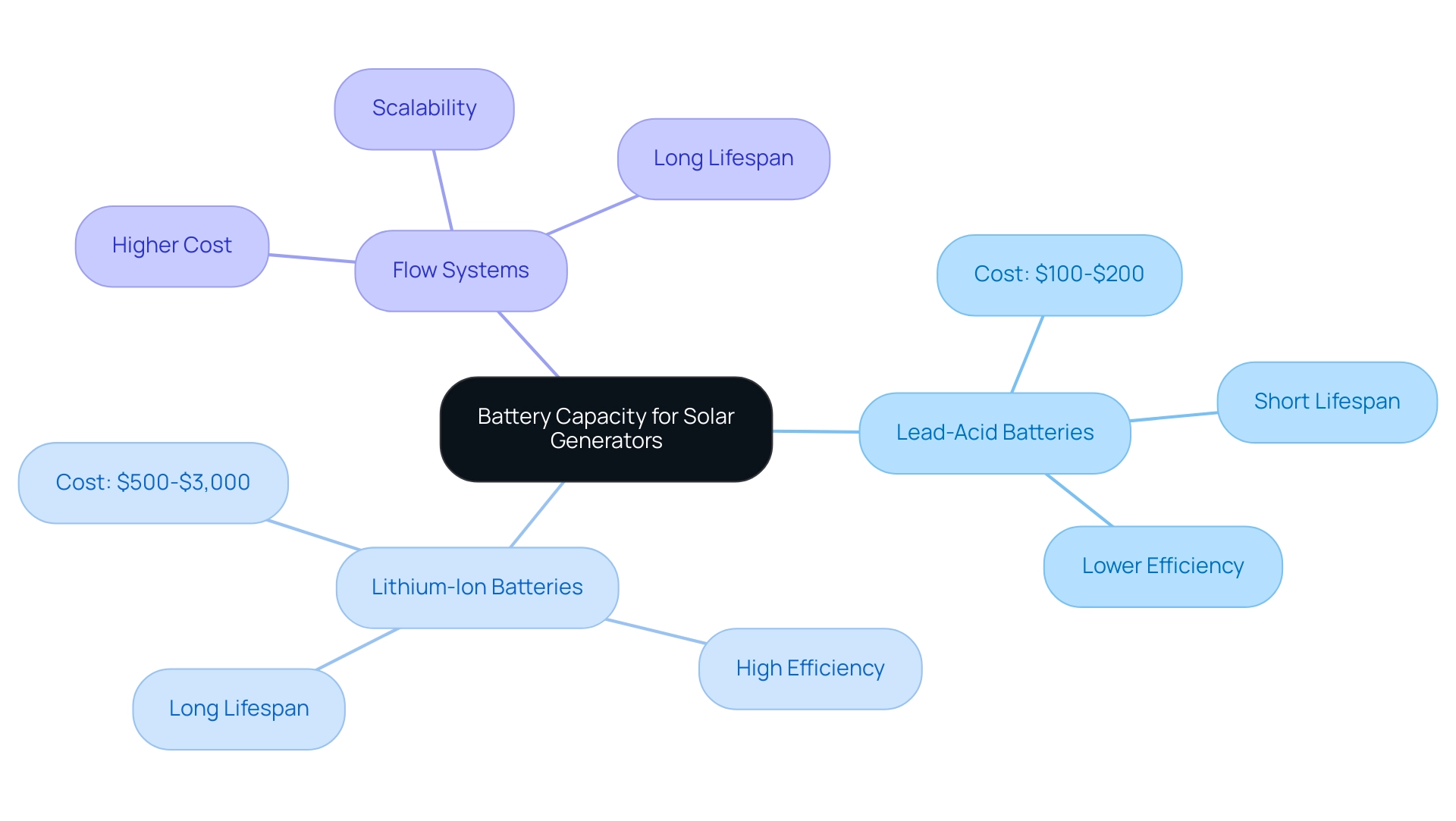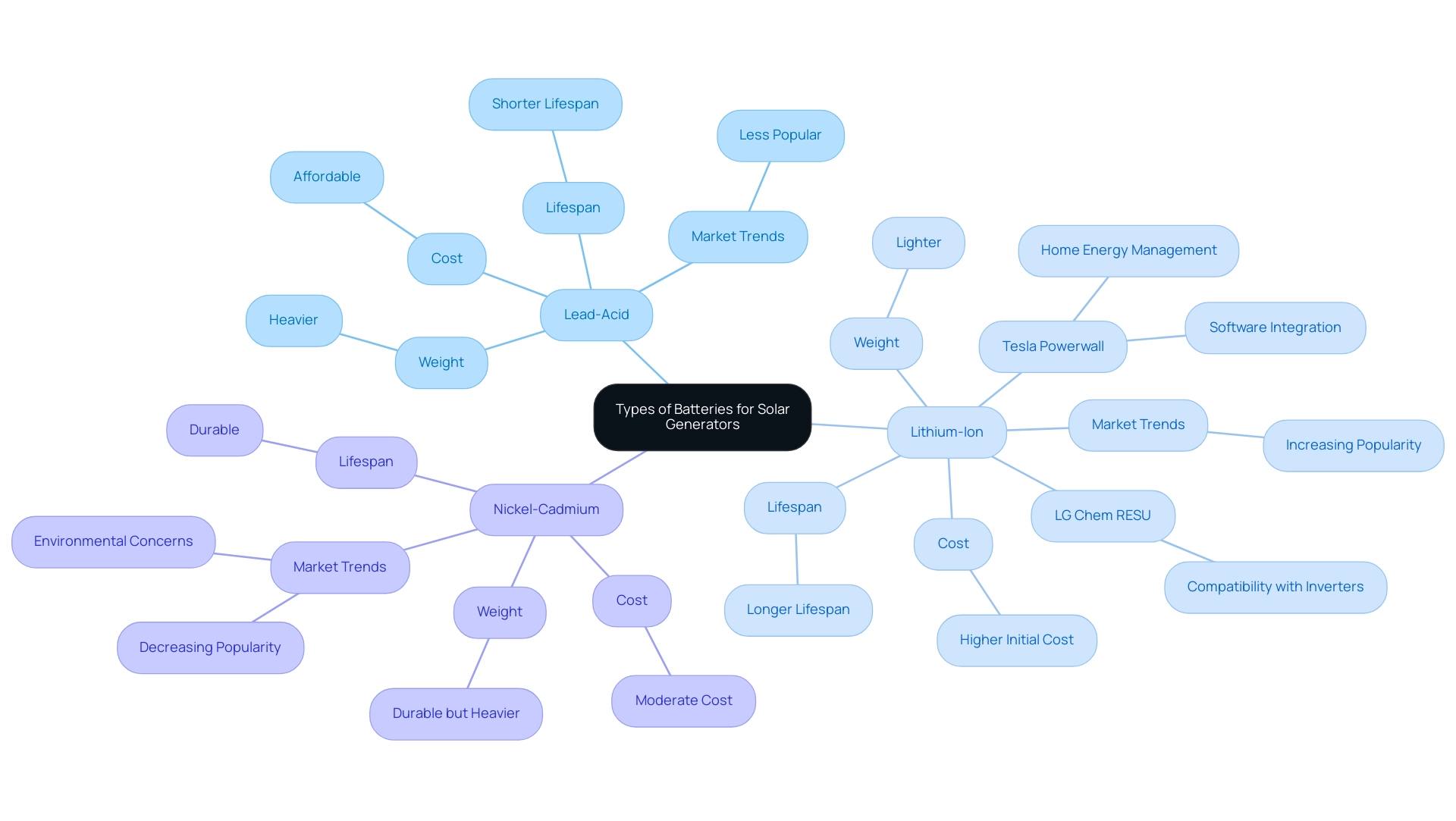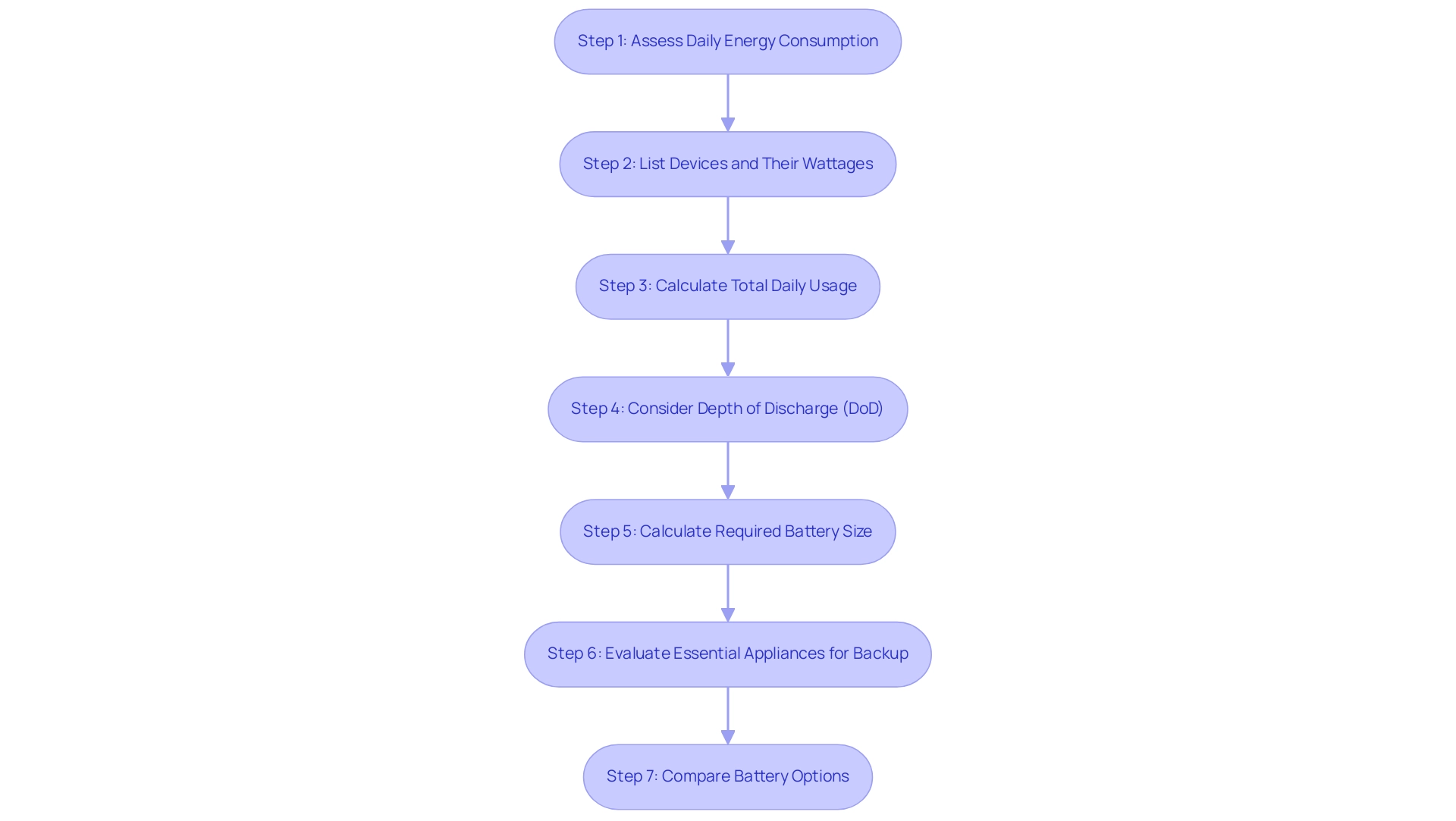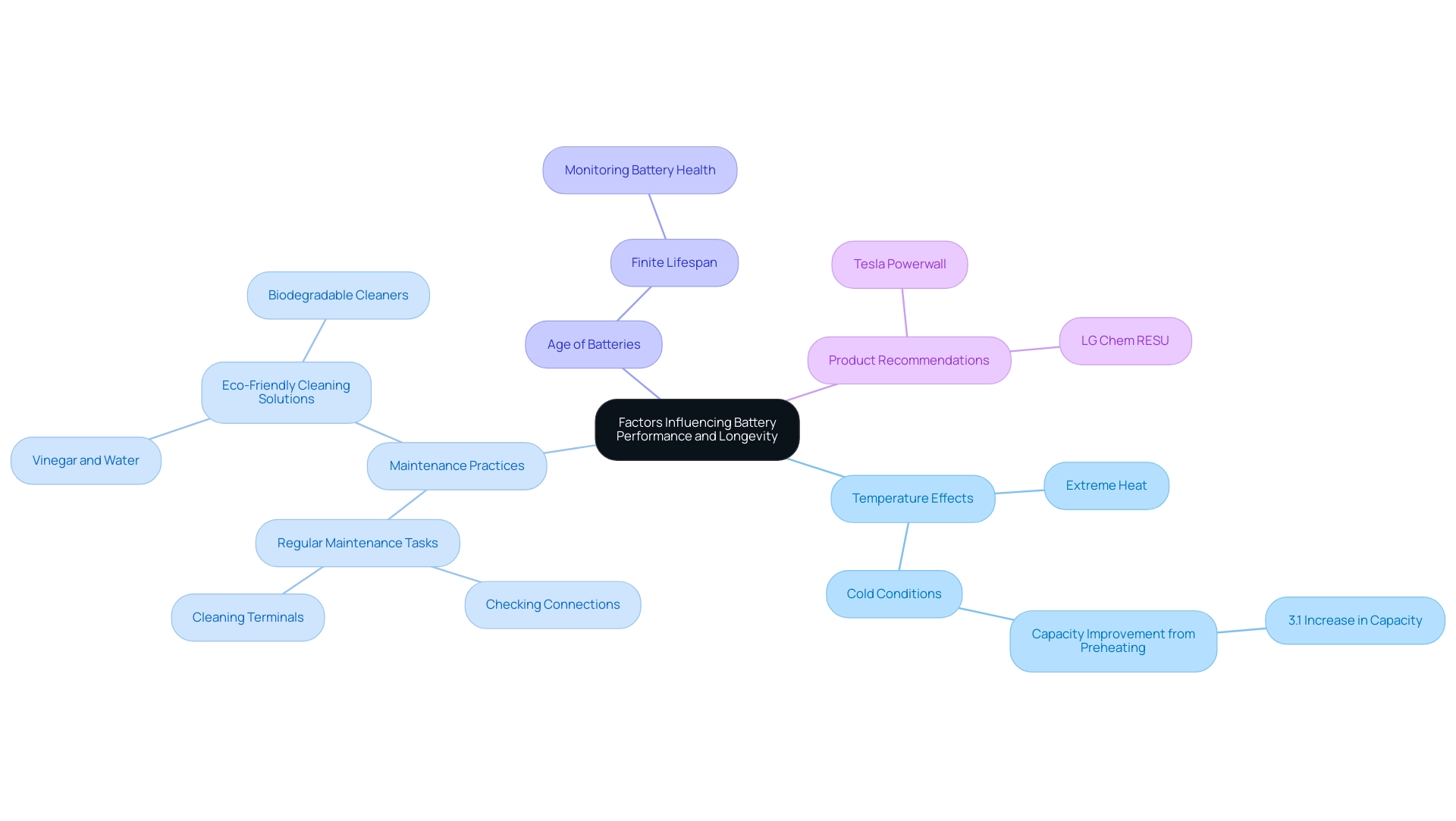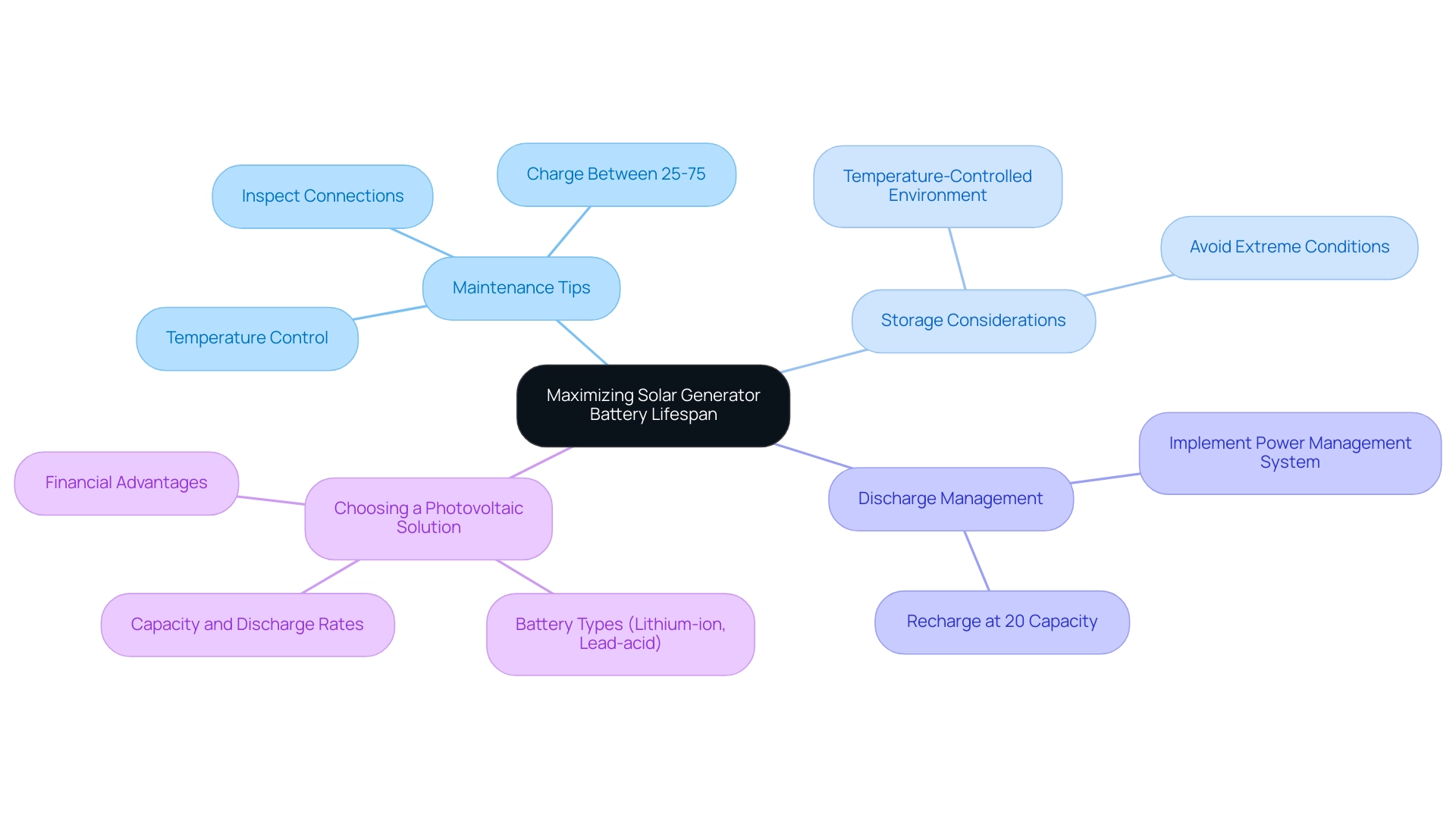Overview
To choose the best battery for your solar generator, you should consider factors such as battery type (lead-acid, lithium-ion, or flow systems), capacity requirements, and efficiency ratings. The article emphasizes that understanding your energy needs and the specific characteristics of each battery type will enable you to make an informed decision that ensures reliable power supply during outages and maximizes your investment in renewable energy.
Introduction
Choosing the right battery for a solar generator can feel like a daunting task, especially with the variety of options available today. Homeowners looking to harness solar energy must consider not only the capacity and type of battery but also how these choices impact their energy needs and sustainability goals. As the demand for renewable energy solutions grows, understanding the nuances of battery technology becomes essential.
- From the efficiency of lithium-ion batteries to the affordability of lead-acid options, each type offers distinct advantages and considerations.
- By delving into the specifics of battery sizing, performance factors, and maintenance tips, homeowners can make informed decisions that ensure their solar systems provide reliable energy for years to come.
This guide aims to simplify the process, empowering individuals to find the perfect battery solution that aligns with their lifestyle and environmental values.
Understanding Battery Capacity for Solar Generators
When it involves choosing the appropriate power source for your energy generator, comprehending power storage is essential. Capacity is usually quantified in amp-hours (Ah) or watt-hours (Wh), both of which show how much power a cell can hold. For photovoltaic generators, it’s essential to select the best battery for solar generator that meets your requirements, especially during blackouts or when you’re away from the grid.
In 2024, the average energy needs for solar generators are projected to be around 400 watts for typical household usage. Let’s say you have devices that require 300 watts of power, and you want to run them for 5 hours. In this situation, you’d require a power source with a minimum of 1500 watt-hours to maintain everything operating smoothly.
According to industry specialists, choosing a power source that delivers a slight additional charge can provide reassurance during prolonged outages. By understanding this connection between your energy needs and storage capacity, you can make a knowledgeable choice that guarantees your home remains energized when you need it most. Recent advancements in solar generator energy storage technology have also led to the development of the best battery for solar generator solutions, making it easier for eco-conscious homeowners to find the right option.
It’s worth noting the differences among power sources:
- Lead-acid types are typically more affordable but have shorter lifespans.
- Lithium-ion options offer higher efficiency and longer life but come at a higher price.
- Flow systems provide scalability and longevity but may require more space and investment.
As you investigate your choices, consider not only the capability and efficiency but also the ecological effect and pricing, ensuring you select a power source that aligns with your values and energy requirements. Costs for photovoltaic energy storage units can fluctuate considerably, with lead-acid alternatives beginning at approximately $100 to $200, lithium-ion units spanning from $500 to $3,000, and flow systems generally priced even higher, depending on the capacity and technology.
Recognizing these distinctions and market trends will assist you in making a comprehensive choice regarding the best battery for solar generator that fits your requirements.
Exploring Types of Batteries for Solar Generators
When it comes to finding the best battery for solar generator, you’ll encounter three main types of cells: lead-acid, lithium-ion, and nickel-cadmium.
- Lead-acid cells are often more affordable, making them an appealing choice, but they come with some trade-offs—they tend to be heavier and have a shorter lifespan, meaning you might need to replace them sooner than expected.
- Lithium-ion batteries, such as the Tesla Powerwall and LG Chem RESU, are gaining popularity among homeowners for their lighter weight, higher efficiency, and longer life spans, despite a higher initial cost.
Recent advancements in lithium iron phosphate (LiFePO4) technology have also enhanced their performance and safety, making them a smart investment for renewable energy applications.
- The Tesla Powerwall, for instance, not only offers robust software integration but also supports various home energy management systems, while the LG Chem RESU is known for its compatibility with a wide range of inverters.
According to market projections, the U.S. solar generator market is expected to grow from USD 153.68 million in 2024 to USD 297.47 million by 2034, indicating an increasing demand for efficient energy storage solutions.
While nickel-cadmium cells are durable, they are becoming less common due to environmental concerns. As one industry representative noted, ‘Thank you for sending the market report and data. It looks quite comprehensive and the data is exactly what I was looking for.’
This highlights the significance of comprehending market trends when selecting a power source. Warranty considerations are also essential; most power source warranties last at least ten years, covering a certain number of cycles or throughput. Ultimately, assessing your power requirements and finances will help you choose the best battery for solar generator, ensuring a dependable power supply for years ahead.
Key participants in the generator market, like Jackery Inc. and EcoFlow Inc., are acknowledged for their contributions to progress in energy storage technology, further impacting consumer preferences.
Sizing Your Solar Generator Battery Correctly
Sizing your solar generator storage unit is a straightforward and empowering process that begins with understanding your daily energy consumption. Grab a notepad and jot down all the devices you plan to power. For each device, note its wattage and how long you typically use it.
For instance, if you have a 100-watt light bulb that you use for about 5 hours, it will consume 500 watt-hours (100 watts x 5 hours). Once you’ve listed everything, add up the watt-hours for all your devices to get your total daily consumption. As a useful reference, keep in mind that the average Canadian household uses approximately 31 kWh of electricity each day; this can assist you in assessing your requirements.
Next, consider the depth of discharge (DoD) for the type of energy storage you select. If you’re inclined to choose a lithium-ion cell, you can typically use up to 80% of its potential, whereas lead-acid cells are best maintained below 50%. This information is essential for identifying the appropriate power storage size that fulfills your consumption requirements without risking harm to the unit.
For instance, if your total daily usage is 2,000 watt-hours, and you choose a lithium-ion unit, you’d determine the necessary size by dividing your daily usage by the DoD:
2,000 watt-hours ÷ 0.80 = 2,500 watt-hours.
This ensures you have enough power to keep your essential devices running smoothly.
Additionally, it’s wise to calculate the electricity requirements of essential appliances, especially for backup power during blackouts. This practical consideration can help ensure that your most critical devices remain operational when you need them most.
Moreover, recognizing your possible savings from renewable power is crucial; for example, a case study showed that a homeowner projected savings of $1,058 over the year, equating to approximately $128 annually per kW of installed capacity. By following these steps, you’ll be well on your way to ensuring your solar system is perfectly sized for your home, paving the way for energy independence and sustainability.
When selecting the best battery for solar generator storage, it is important to consider additional features such as efficiency ratings, lifespan, and pricing. For example, lithium-ion cells tend to have a longer lifespan and higher efficiency compared to lead-acid cells, but they may come at a higher initial cost. A detailed comparison of the best battery for solar generator options can help you make an informed decision that balances upfront investment with long-term savings.
By exploring these factors, you can optimize your energy storage solution and enhance your home’s sustainability.
Factors Influencing Battery Performance and Longevity
When it comes to selecting the best battery for solar generator power sources, several key factors influence their performance and longevity, especially for eco-conscious homeowners. Temperature plays a crucial role; extreme heat can shorten the lifespan of the power source, while cold conditions may reduce efficiency. For instance, recent studies on thermal management systems have indicated that warming energy cells can enhance capacity by approximately 3.1% in colder climates—definitely good news for those living in chillier areas!
A case study on an air heating system highlights how effective preheating can enhance energy storage performance. Additionally, there’s valuable information from research on lithium-ion power sources used in electric vehicles that can provide further insights into temperature impacts. Regular maintenance is essential too; tasks like checking connections and cleaning terminals can significantly improve battery efficiency.
In terms of maintenance, using eco-friendly cleaning solutions for photovoltaic panels, such as vinegar and water or specialized biodegradable cleaners, can help maintain their efficiency without harming the environment. Furthermore, understanding the comparative performance of power heaters and ensuring panels are installed at optimal angles can maximize energy output. Remember, age matters—batteries have a finite lifespan, so keeping tabs on their health is crucial for optimal functioning.
As Michael Prine-Robie wisely notes, ‘When discussing with clients regarding the functions of power storage units, it’s essential to recognize all elements that may influence.’ By being aware of these aspects, you can establish the optimal conditions for your energy generator unit, ensuring it operates effectively and endures for years ahead. For specific recommendations on the best battery for solar generator, options like the Tesla Powerwall or the LG Chem RESU are known for their reliability and efficiency. For more in-depth information, check out the article published in Innovation (Camb), volume 4, issue 4, article number 100465.
Maximizing the Lifespan of Your Solar Generator Battery
To ensure your solar generator’s energy storage serves you well for years to come, here are some friendly tips to consider:
- Regularly inspect connections for any signs of corrosion and keep it clean and dry to promote optimal performance.
- Maintaining the charge between 25% and 75% is crucial to prevent degradation, especially during long-term storage.
- Store your power source in a temperature-controlled environment, shielding it from extreme heat or cold.
Avoid deep discharging by recharging your power source once it dips to around 20% capacity—this simple practice can significantly extend its lifespan. Implementing a power management system is another excellent step; it helps monitor performance and optimizes charging cycles. Remember, just like ensuring your power source is active while charging an iOS device via USB to prevent energy depletion, well-maintained cells can outlast their intended lifespan.
By adhering to these optimal methods, you’ll maintain your power source efficient and dependable, ensuring your renewable experience is effortless! Furthermore, when choosing a photovoltaic storage solution, consider:
- Varieties like lithium-ion or lead-acid
- Specifications such as capacity and discharge rates
- Financial advantages, including possible savings on power expenses and incentives for renewable power use
Understanding how solar panels work in conjunction with your battery system can also enhance efficiency and performance, ensuring you maximize your solar energy investment.
Conclusion
Selecting the right battery for a solar generator is an essential step toward achieving energy independence and sustainability. Understanding key aspects such as battery capacity, types, and sizing can empower homeowners to make informed choices that align with their energy needs. From the cost-effectiveness of lead-acid batteries to the efficiency and longevity of lithium-ion options, each type brings unique benefits and considerations to the table.
By assessing daily energy consumption, factoring in depth of discharge, and considering environmental impacts, individuals can tailor their battery selections to fit their lifestyles. Additionally, maintaining proper care and monitoring of battery performance can significantly enhance longevity, ensuring a reliable power source for years to come.
In a world increasingly focused on renewable energy solutions, the importance of making thoughtful choices about solar generator batteries cannot be overstated. With the right knowledge and approach, homeowners can harness the power of the sun, reduce their carbon footprint, and contribute to a more sustainable future. It’s time to embrace these advancements in battery technology and take confident steps toward a greener, more energy-efficient home.



